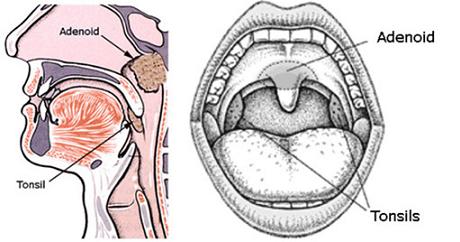The adenoid
Adenoids are two masses of tissue that are located in the upper portion of the throat behind the nose. Also known as pharyngeal tonsils, adenoids are not as easy to see as tonsils are.
ENT specialists may use mirrors, scopes or, in some cases, x-rays in order to examine these sponge-like tissues. In children, the adenoids play a significant role in fighting off infection.
According to Mosby’s Medical, Nursing & Allied Health Dictionary, the adenoids decrease in size after the age of 5 until eventually the immune system finds other ways to fight off infections.
Symptoms that may develop from enlarged adenoids include:
- Inability or difficulty breathing through the nose
- Snoring
- Noisy breathing
- Voice sounds as if nose is pinched
- Chronic sinus-like symptoms
- Chronic ear infections
- Sleep apnoea
If your child is exhibiting these symptoms, schedule an appointment with an ENT doctor who will check your child’s ears, nose and throat for any abnormalities. Oral antibiotics may be prescribed if an infection is found.
If medication does not eliminate symptoms, your doctor may recommend adenoid removal surgery.
Adenoid removal surgery (adenoidectomy)
Adenoidectomy in children is commonly needed for children who experience ongoing ear and sinus infections. When left untreated, the swollen adenoids may not allow the middle ear to stay properly ventilated leading to further infections and possible temporary hearing loss.
Many children have their adenoids removed without also having their tonsils removed. However, if your child is also having problems associated with their tonsils, it may be recommended that they have an adenoidectomy and tonsillectomy at the same time.
This is a common procedure that will require your child to undergo general anaesthesia. There will be no incisions through the skin. Instead, the doctor will be able to access both adenoids and tonsils through the mouth.

